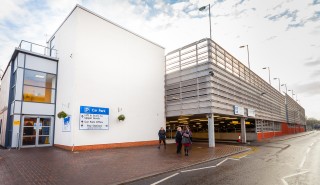Laboratory Medicine
Test Directory / Fluid Glucose
Fluid Glucose
Fluoride Oxalate
| Test | Fluid Glucose |
|---|---|
| Common Abbreviations | FLGLU |
| Profile | NA |
| Tube type | fluoride EDTA |
| Clinical Indication | Glucose is most commonly measured in fluids as a marker of microbial infection. Bacteria, mycobacteria or fungi present in a sample metabolise glucose, causing levels to drop below those found in serum and non-infected fluid samples. Low levels may also be found in malignancy due to the high metabolic rates of tumours. |
| Specimen Type | Fluid |
| Sample type | Fluid |
| Minimum Volume | 1 mL |
| Special Precautions | Please visually inspect samples before sending for analysis and indicate the site of collection. Samples which are very turbid or thick may be rejected as there is a risk of damage to laboratory equipment |
| Stability | No specific data available for fluids. Glucose is stable for 72 hours in separated serum and 7 days in plasma at 2-8°C |
| Turnaround Time | Inpatient: 6 hours Outpatient/ GP: 24 hours |
| Laboratory | York and Scarborough |
| Reference Interval | No specific reference ranges are avaiable for fluid samples. Interpret results in light of plasma glucose measurements in samples drawn at the same time point. Very low glucose levels tend to indicate bacterial infections. |
| Limitations | Fluid composition tends to be very variable, and the exact mixture of components in a fluid sample can have unpredictable effects on measurement of any one analyte. Our laboratory methods are NOT CE-marked or validated for analysis of fluids, and no specific quality control materials are available. ALL results must be interpreted with caution. |
| Notes |






